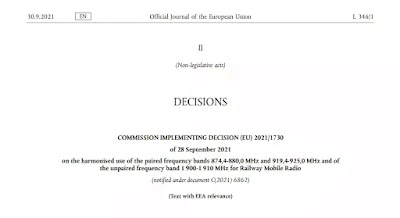The technical specifications of Global System for Mobile Communications – Railway (GSM-R) were finalised approximately 20 years ago. At that time, negotiations were launched by the International Union of Railways (UIC) with the European Frequency Committee (CEPT) on whether to use TETRA or GSM. After choosing the latter, the UIC launched again with European Commission (EC) and railways a project called European Integrated Radio Enhanced NEtwork (EIRENE) that specifies today the requirements for mobile networks for railways. The European Telecommunications Standards Institute (ETSI) as a specialized of GSM were also involved.
 |
| Simplified GSM-R System, Source: UIC |
A project called MObile radio for RAilway Networks in Europe (MORANE) to develop prototypes that have been tested in Italy, France, and Germany came after EIRENE to finalize it by the development of detailed specifications.
ERTMS/ETCS wouldn't be created without EIRENE and MORANE projects, following these two projects, it was launched as a project.
As technology advances, industrial will not support GSM-R as of the next decade. From here, the need for new radio communication system appears. A new project was launched for the successor of the GSM-R, called Future Railway Mobile Communication System (FRMCS). Below, a video by UIC that introduces this system.
For this project, besides UIC, the European Rail Industry Association (UNIFE), European railway infrastructure managers, and European suppliers are involved.
As it will not be easy to migrate completely from one system to another, we will have probably an approximate 10-year migration phase as of 2030 so there will be parallel use of both radio communication systems. Europe is well prepared for this phase and a decision to define the frequency bands of each system during this phase appeared in the Official Journal of the European Union on 30 September 2021:
 |
| COMMISSION IMPLEMENTING DECISION (EU) 2021/1730 of 28 September 2021 |
0 Comments
Post a Comment